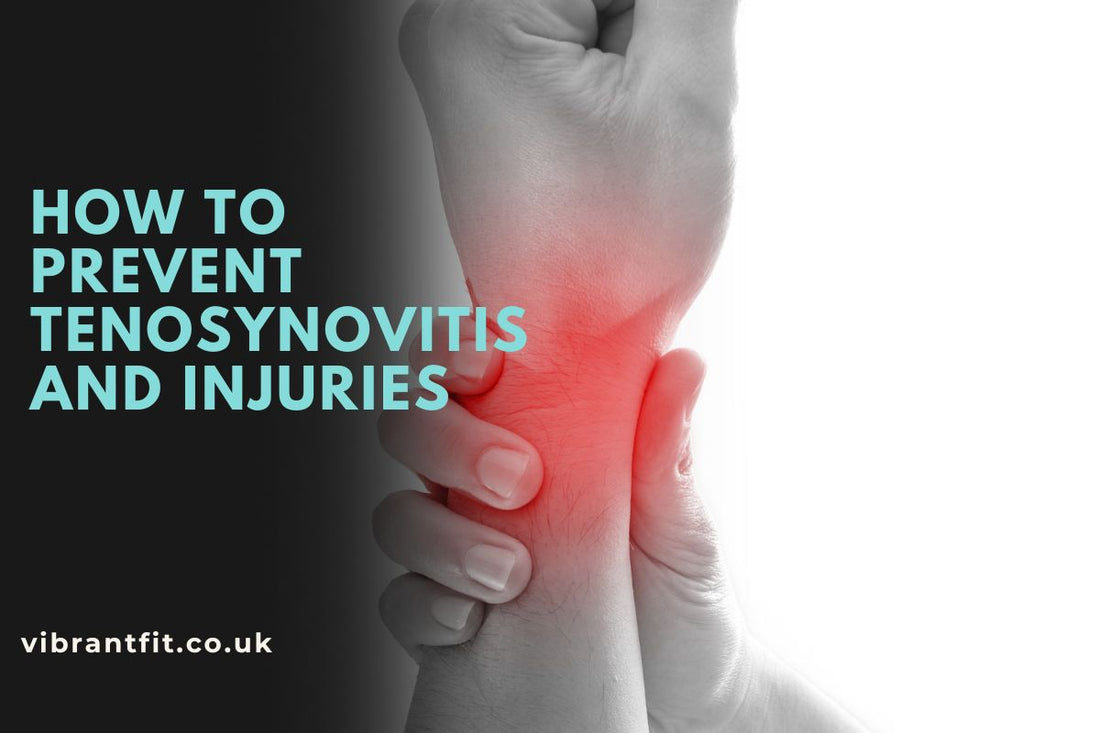
What is Tenosynovitis?
Share
Tenosynovitis is an inflammation of the synovial sheath that surrounds and protects tendons, leading to pain, swelling, and restricted joint movement. This condition commonly affects the hands, wrists, feet, and ankles, and can result from repetitive strain, infection, or underlying systemic diseases such as rheumatoid arthritis. Accurate diagnosis and timely intervention are essential to prevent progression and complications. This article provides a detailed overview of tenosynovitis, including its causes, symptoms, diagnosis, treatment options, and prevention strategies, to support effective clinical management.
What Is Tenosynovitis?

Tenosynovitis is an inflammation of the protective sheath surrounding your tendons. Tendons are strong cords that connect muscles to bones and allow movement. The sheath, called the synovial membrane, helps tendons glide smoothly. When this sheath becomes inflamed, it causes pain and restricts movement. Tenosynovitis is common and affects many people, especially those with conditions like diabetes or rheumatoid arthritis. A severe form, stenosing tenosynovitis, is often called trigger finger or trigger thumb, where the finger or thumb locks during movement.
Types of Tenosynovitis
There are different forms of tenosynovitis depending on the tendons involved. Stenosing tenosynovitis affects fingers or thumbs, causing pain, stiffness, and sometimes a lump. De Quervain’s tenosynovitis occurs on the thumb side of the wrist, leading to pain and difficulty gripping. Posterior tibialis tenosynovitis affects tendons supporting the foot’s arch, causing swelling and sometimes a fallen arch. Peroneal tenosynovitis involves tendons along the outer ankle, resulting in pain and walking difficulties. Each type shares inflammation but varies in symptoms and location.
Causes and Risk Factors
Tenosynovitis often results from repetitive movements such as sports, manual labour, or typing. It usually begins in middle age. Medical conditions like diabetes and rheumatoid arthritis increase risk by affecting joints and tissues. Infections caused by bacteria such as Staphylococcus aureus can lead to tenosynovitis. Certain medications, including some antibiotics and statins, may also raise risk. Pregnancy and being female appear to increase susceptibility. Sometimes, no clear cause is found.
Signs and Symptoms of Tenosynovitis

Symptoms typically include pain and swelling around the affected tendon sheath. Pain often worsens with movement, especially repetitive activity. Tenderness and difficulty moving the joint smoothly are common. The area may become red or discoloured. In trigger finger cases, the digit may lock or catch. Swelling from fluid build-up can cause tenderness. Infectious cases may also present with warmth, fever, and spreading redness.
How Is Tenosynovitis Diagnosed?
Doctors diagnose tenosynovitis through symptom history and physical examination. They may perform specific tests, such as Finkelstein’s test for De Quervain’s tenosynovitis. Imaging like ultrasound or MRI helps confirm inflammation or rule out other conditions. Blood tests may be ordered if infection or underlying inflammatory disease is suspected. Differentiating tenosynovitis from tendonitis or arthritis is important to determine treatment.
Treatment Options for Tenosynovitis
Treatment options for tenosynovitis range from rest and immobilisation to anti-inflammatory medications and physical therapy. In severe or persistent cases, corticosteroid injections or surgery may be necessary to relieve symptoms and restore function.
-
Conservative Treatments: Resting the affected area and avoiding aggravating activities is essential. Splints or braces immobilise the tendon to aid healing. Ice packs reduce swelling; heat may relieve stiffness after inflammation decreases. NSAIDs ease pain and inflammation. Corticosteroid injections often reduce symptoms effectively. Physical therapy with gentle exercises restores motion and strengthens muscles.
-
Treatment for Infectious Tenosynovitis: Antibiotics are needed for infections. Severe cases might require hospital care and surgical drainage to remove infected tissue. Early treatment is critical to prevent damage.
-
Surgical Intervention: Surgery is considered if symptoms persist despite treatment or if the tendon sheath narrows significantly, as in trigger finger. Surgery releases or removes inflamed tissue to free the tendon. It is usually outpatient and followed by rehabilitation.
Complications and Risks
If untreated, tenosynovitis can cause chronic pain and stiffness. Infection may lead to tendon necrosis or rupture. Stenosing tenosynovitis can result in permanent contractures, limiting finger movement. Severe infections may rarely require amputation. Early diagnosis and treatment reduce these risks and improve recovery chances.
Preventing Tenosynovitis
Prevention focuses on reducing strain on tendons. Taking frequent breaks during repetitive tasks helps avoid overuse. Using proper ergonomics at work and in sports reduces tendon stress. Learning correct lifting and movement techniques protects against injury. Warming up before exercise prepares muscles and tendons. Managing medical conditions like diabetes is also important. Early attention to symptoms prevents worsening.
Living with Tenosynovitis
Rest at the first sign of pain or swelling. Changing habits that contribute to symptoms is vital. For example, adjusting your workspace or exercise routine can help. Seek medical advice if symptoms persist. Following treatment and rehabilitation plans improves outcomes. Patience and care often lead to regaining normal function.
Recommended Supportive Products for Tenosynovitis

For individuals suffering from tenosynovitis, using supportive products can significantly aid in managing symptoms and promoting healing. VibrantFit offers a variety of wrist braces, thumb splints, and compression gloves designed to stabilise the affected areas and reduce strain on inflamed tendons. These supports help limit painful movements, decrease swelling, and provide comfort during daily activities or rehabilitation. Incorporating such products alongside rest and medical treatment can improve recovery outcomes and help prevent further injury. For tailored support options, VibrantFit’s tenosynovitis range is a reliable resource to consider.
Also read : What is Skier's Thumb
Conclusion
Tenosynovitis is a common inflammatory condition of the tendon sheath that causes pain and limits movement. Early diagnosis and treatment are important to prevent complications. Most cases respond well to conservative care, while surgery is reserved for severe or persistent symptoms. A clear understanding of its causes and management improves patient outcomes.
